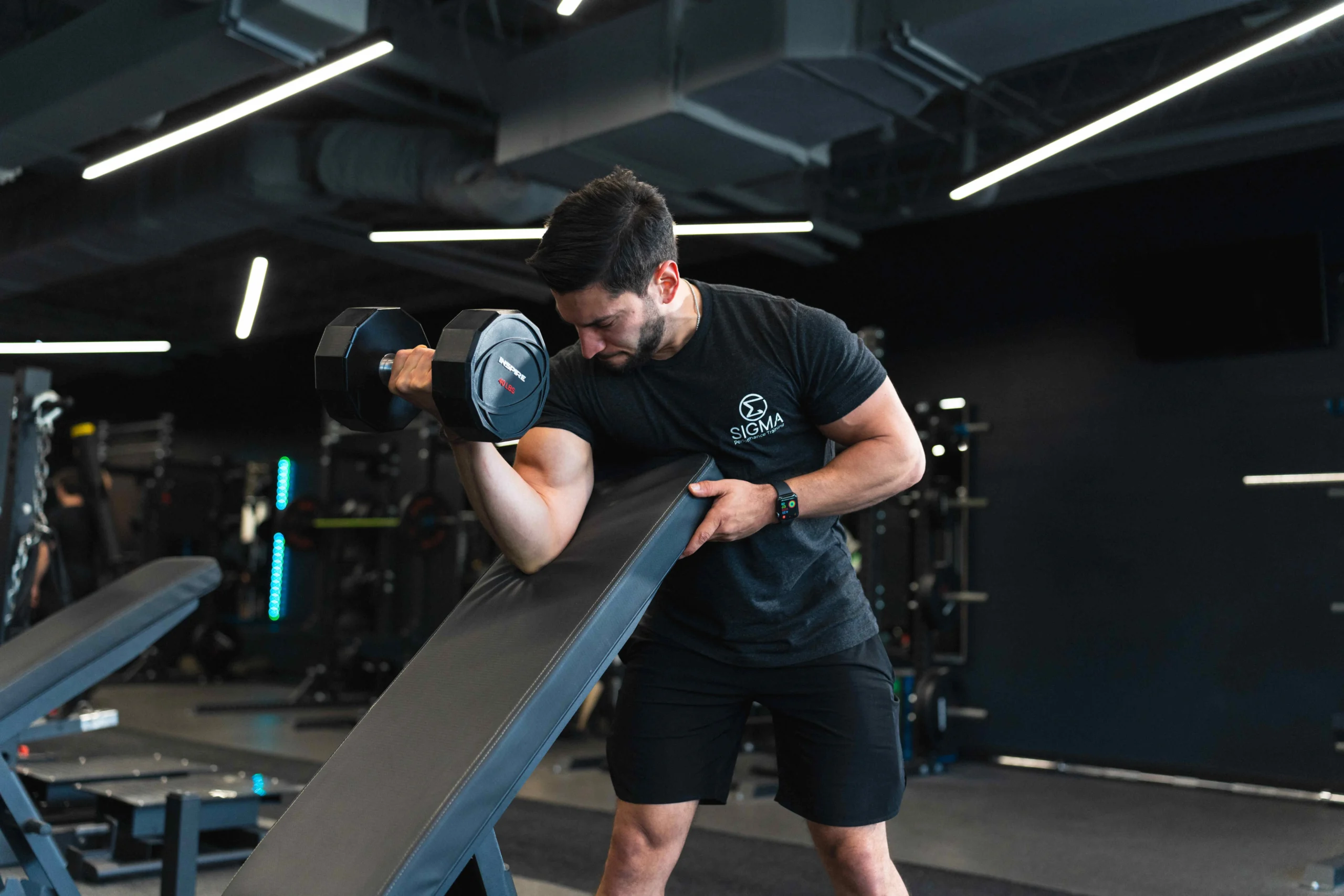Are you new to Hyrox and wondering how to start effectively? Designing a Hyrox beginner training plan requires understanding the unique demands of the competition. Unlike traditional workouts, Hyrox combines running with functional strength exercises, demanding both endurance and power. With the right structure, even a beginner can build confidence, avoid injury, and maximize performance.
What Is Hyrox, and Why Does It Require a Specific Training Approach?
Hyrox is more than just a fitness challenge—it is a hybrid test of stamina, strength, and strategy. Competitors run 1 km between functional exercises, including rowing, sled pushes, wall balls, and farmer carries. Each segment taxes different energy systems, meaning a beginner needs a balanced approach: cardiovascular conditioning, functional strength, and muscular endurance.
A beginner who jumps straight into random workouts risks fatigue, improper form, or injury. Therefore, Hyrox beginner training must integrate both progressive overload and skill-based exercises. High-quality coaching, such as the programs offered by Sigma Performance Training, can guide new athletes in creating a sustainable plan.
How Often Should Beginners Train for Hyrox?
Training frequency is critical for avoiding burnout while steadily improving. Beginners should aim for 3–4 training sessions per week:
- Two strength-focused days: Targeting compound lifts and functional movements.
- One endurance day: Running intervals and rowing for cardiovascular adaptation.
- Optional active recovery day: Mobility work, yoga, or light cardio to support recovery.
This schedule allows for recovery, which is just as important as the workout itself. Overtraining can hinder progress, especially for beginners who are still developing their fitness foundation.
What Are the Core Components of Hyrox Beginner Training?
A well-rounded Hyrox beginner training plan includes three primary components: endurance, strength, and technique.
1. Endurance Training
Running forms the backbone of Hyrox. Beginners should start with:
- Interval runs: 400–800 meters at moderate pace, followed by short rests.
- Steady-state runs: 20–30 minutes at a conversational pace to build aerobic capacity.
- Rowing sessions: 10–15 minutes at controlled intensity for upper-body endurance.
Endurance training improves cardiovascular capacity, ensuring that beginners can sustain energy throughout the Hyrox course.
2. Strength and Functional Training
Functional strength prepares the body for movements like sled pushes, burpees, and farmer carries. Focus on:
- Compound lifts: Squats, deadlifts, and presses to develop total-body strength.
- Functional movements: Kettlebell swings, sandbag carries, and wall balls.
- Core stability: Planks, hollow holds, and rotational exercises to maintain posture during high-intensity movements.
Progressive overload is key. Start with manageable weights and gradually increase intensity to avoid injury while enhancing high performance training outcomes.
3. Skill and Technique Practice
Many beginners underestimate the importance of technique. Efficient movement saves energy and reduces risk:
- Sled push/pull drills: Practice foot placement and push mechanics.
- Rowing technique: Focus on leg drive and coordinated pull.
- Burpee pacing: Develop rhythm to sustain repetitions over multiple rounds.
Regular practice ensures that beginner athletes transition smoothly between exercises on competition day.
How Should a Beginner Combine Running and Strength in Training Sessions?
For Hyrox, blending running and functional strength in one session mimics race conditions. Beginners can start with hybrid workouts:
- Warm-up: 5–10 minutes light jogging or rowing.
- Circuit 1: Run 400m → 10 wall balls → 200m row.
- Circuit 2: Run 400m → 10 kettlebell swings → 10 burpees.
- Cool-down: Stretching and mobility work.
These workouts build endurance while reinforcing technical skills. Beginners can reduce repetitions or distance initially, gradually increasing as fitness improves.
What Are the Best Progression Strategies for Hyrox Beginners?
Progression should be gradual, measured, and strategic:
- Volume first, intensity later: Start with manageable distances and reps before increasing weight or speed.
- Add complexity slowly: Introduce new Hyrox exercises one at a time.
- Track performance: Keep a log of distances, reps, and weights to monitor improvement.
- Periodize training: Alternate lighter and heavier weeks to prevent fatigue and encourage adaptation.
Structured progression ensures beginners remain motivated and avoid plateaus.
How Important Is Recovery and Nutrition in Hyrox Training?
Even the best training plan fails without recovery and proper nutrition. Beginners should prioritize:
- Sleep: Aim for 7–9 hours to allow muscle repair and cognitive recovery.
- Hydration: Maintain fluid balance for energy and performance.
- Balanced diet: Focus on lean proteins, complex carbohydrates, and healthy fats to fuel both endurance and strength workouts.
Incorporating rest days and light mobility sessions ensures that beginners maintain consistency, which is critical in high performance training for Hyrox.
When Should Beginners Include Cross-Training and Conditioning?
Cross-training helps improve fitness while preventing monotony:
- Swimming or cycling: Enhances cardiovascular endurance with lower joint impact.
- Bodyweight circuits: Build muscular endurance without heavy weights.
- Mobility and flexibility drills: Improve range of motion, aiding technique in lifts and carries.
Integrating these elements once or twice a week complements the main Hyrox training plan and supports long-term performance.
How Can Beginners Monitor Progress Effectively?
Tracking progress keeps beginners motivated and ensures they are training smartly:
- Record running times and distances.
- Track weights lifted and repetitions in functional exercises.
- Note perceived exertion and recovery levels.
- Reassess every 4–6 weeks to adjust intensity, volume, or technique focus.
Data-driven adjustments lead to more effective and efficient Hyrox beginner training.
Why Should Beginners Consider Professional Guidance?
While self-directed training is possible, beginners benefit greatly from expert coaching. Sigma Performance Training offers programs designed for newcomers, combining personalized strength and endurance plans with technique coaching. A professional coach ensures:
- Correct exercise form.
- Proper progression and periodization.
- Motivation and accountability.
- Tailored strategies to avoid injury.
Professional support accelerates progress and builds confidence for your first Hyrox competition.
What Are the Key Takeaways for Structuring a Beginner Hyrox Training Plan?
- Balance is crucial: Combine endurance, strength, and skill practice.
- Progress gradually: Focus on volume first, then intensity.
- Recovery is part of training: Sleep, nutrition, and mobility matter.
- Practice technique: Efficient movement conserves energy and prevents injury.
- Track your progress: Data helps refine training and measure improvement.
- Seek guidance when possible: Coaches like those at Sigma Performance Training can make the journey safer and more efficient.
By following these guidelines, beginners can build a strong foundation in Hyrox, avoid common pitfalls, and steadily improve performance. Structured training, smart progression, and proper recovery are the keys to excelling in this unique fitness competition.
Congrats! You’ve Finished This Blog.





